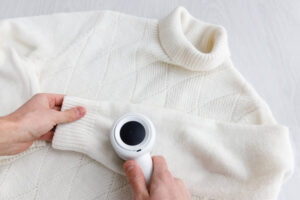
9. Using dish soap to clean a cutting board
Why: The cuts in wood and plastic cutting boards collect small food particles and make them difficult to clean, even with dish detergent and hot water. Moreover, these might multiply germs on your cutting board, which can then spread to any meal you make there. Yikes!
The solution is simple: Don’t even think of putting them in the dishwasher! In the hot water and steam of a dishwasher, a hardwood cutting board might distort and shatter, while a plastic one can melt.
Instead of using dish soap, you can use some hydrogen peroxide or a bleach solution (2 teaspoons of bleach to 1 gallon of water). After you let them soak for a couple of minutes, make sure the cutting boards are rinsed and dried thoroughly, so everything is clean and germ-free.
















17 Responses
THANK YOU !! VERY USEFUL.
Yes! Thank you for the article.
Very helpful
I thought about the toilet brush idea before and I am cleaning it more often since Covid has surfaced. That never hurts anyways. Preventing illness goes a long way.
I’d clean it with a soap ( not soup) solution though. 🤣
A few drops of Lysol in cleaned toilet, swish toilet brush well & this should prove sufficient! The bottle claims it will kill even Covid germs.
what kind of soup do u recommend to clean the toilet brush?
Ha, ha! I wondered the same thing!!
Lol not soup soap the best thing is bleach
Homemade Chicken noodle soup. It will have never felt better!
Very helpful. I do most of the things I’ve read. Great to know my home is clean,
Very good information & helpful as well, thanks.
the suggested process of adding baking soda to vinegar is a waste of time. The vinegar will convert the baking soda to sodium acetate, water, as well as carbon dioxide gas. I suggest that you do two different steps. 1st vinegar as an anti microbial treatment and 2nd) baking soda to absorb odors.
I can’t believe that this a real cleaning suggestion.
Carbon dioxide is something we exhale. It is not good to be inhaled as it displaces oxygen and makes you drowsy or sleepy.
Bleach is a carcinogen and extremely dangerous!
Natural cleaners like vinegar, hydrogen peroxide, borax, and baking soda are certainly safer
AWESOME Great to know some mistakes you are making in cleaning. I know some of them but would like to know more. THANKS
AWESOME Great to know some mistakes you are making in cleaning. would like to know more. THANKS